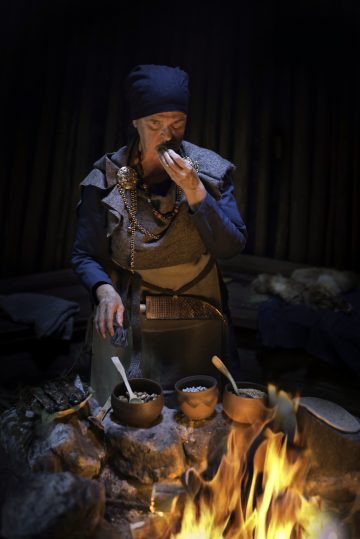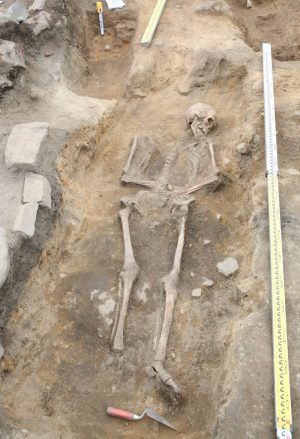The SUMRAGEN project
In our previous project SUGRIGE (funded by Jane and Aatos Erkko Foundation 2016-2022), we studied ancient genomes in the speaking areas of the finno-ugric language family which concentrate in northeast Europe. Research done in the SUGRIGE-project strongly suggested that the genetic background of Finnish inhabitants is very complex and that the genetic landscape has continuously changed during the last 2000 years. In SUMRAGEN we concentrate on analysing ancient DNA data from Finland even further. We study the genetic evolution of Finnish inhabitants and shed light on the stories of ancient individuals.

Figure: Reenactment of an Iron Age person. Picture from Ulla Moilanen.
Using aDNA sequencing, we intend to expand the understanding about how the genetic diversity of Finnish and Sami people has developed geographically from the Iron age to modern ages. We will also analyse the metagenomes found within the archaeological samples. Metagenomes reveal information about the individuals’ microbiomes, exposure to pathogens, illnesses and also the evolution of pathogens.
Additionally, we delve deeper into the stories of individuals. An example of an individual that changed our understanding of the past is the deceased found in Hattula Suontaka, who wore feminine jewelry and was buried with a sword. We found that the individual had an abnormality of the sex chromosomes and had an XXY genotype. This news received massive international media attention and provoked discussion about individual identity and the significance of sex and intersexuality in ancient societies. In SUMRAGEN we study similar interesting individuals.

Figure: A medieval grave at the Hiitola Kylämäki cemetery. Photographed by Stanislav Belskiy.
So far, we have sequenced 200 ancient individuals from Finland. The human samples we collect are handled in the Nobel-laboratory of the Max Planck Institute for Evolutionary Anthropology (MPI-EVA) in Leipzig, Germany. Pathogen aDNA is handled in Leipzig and Basel, Switzerland (Verena Schünemann, University of Basel). Animal, plant and soil samples will be handled in the Center for Evolutionary Applications (CEA) in the University of Turku, Finland, and computational analyses are also performed in the University of Turku.